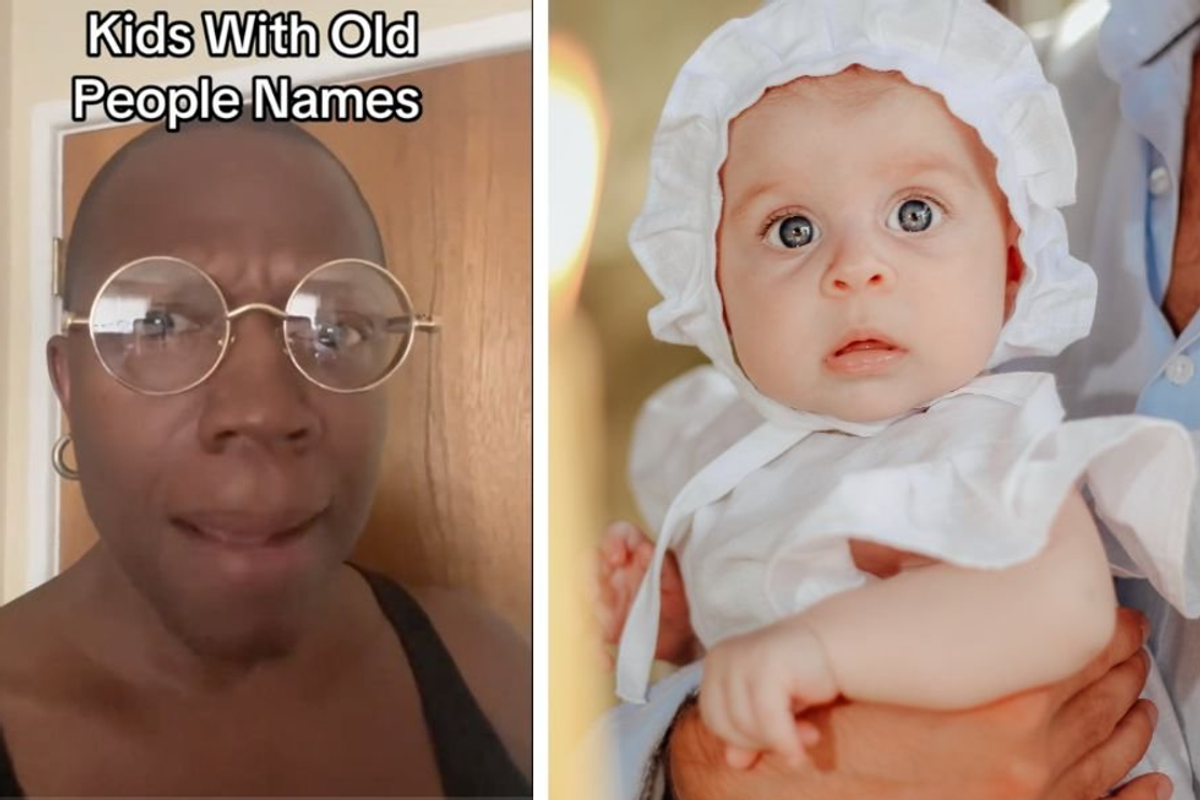A lot of people are worried about the environment right now. And President Trump ... well, he's not helping.
Photo by Drew Angerer/Getty Images.
He's called climate change a Chinese hoax, made no secret of his disdain for the Clean Power Plan, and signaled that he plans to withdraw the U.S. from the Paris climate deal.
But here's the thing: Though the political parties are divided, the American people are largely in agreement — we want to preserve the environment and take proactive steps against climate change. So, with that in mind...
Here are 21 things anyone can do over the next four years to take action for the environment:
1. Donate to organizations dedicated to environmental causes.
You know that old adage about voting with your dollar? Now's the time to put it to use. Check out organizations such as the Natural Resources Defense Council, Sierra Club, Ocean Conservancy, Theodore Roosevelt Conservation Partnership, World Wildlife Fund, Alliance for the Great Lakes, Rainforest Trust, or the Conservation Fund.
2. If you can't donate yourself — well, how do you like marathons and bake sales?
If donating money isn't in the cards, you could try signing up for charity drives or races. The World Wildlife Fund's Panda Nation program, for instance, can help you set up fundraisers that combine events like bake sales or marathons with charitable donations.
3. Get your hands dirty by joining a citizen scientist project.
A horseshoe crab. Image via iStock.
Instead of just promoting science and nature conservation, how about getting involved yourself? Scientists need lay people to help collect important data from all around the country. There are a ton of these projects, from tracking horseshoe crabs in Delaware Bay to watching urban birds. PBS, National Geographic, and Scientific American have lists of citizen science projects for you to help out in your area.
4. Prefer to keep your hands on the cleaner side? Help with research by playing games online.
No joke. Some of these citizen science projects have migrated to the internet. At Zooniverse, for instance, you can decipher bat calls, spy on colonies of penguins, investigate old whaling ship records, or play Chimp & See.
Other websites will let you use satellite footage to uncover archaeological sites or will fold proteins while you sleep.
5. Organize or participate in park cleanup events.
Image via iStock.
Instead of a hiking trip, why not join a park cleanup? It's a good workout, and at the end you can break out some beers and enjoy the newly clean park yourself.
Check out The Ocean Conservancy and GOOD for guides to getting started.
6. Support good science journalism with real, actual money.
You know what's the antidote to fake news? Real news.
Show your support for legitimate, nuanced science reporting by subscribing or donating to outlets such as National Geographic, Scientific American, and Smithsonian Magazine. While you're at it, support reputable news outlets such as The Wall Street Journal, The Washington Post, or NPR.
7. And follow them on social media so you can join in the discussion.
In addition to the places mentioned above, check out groups like the National Parks Service; science communicators like Neil deGrasse Tyson and Ed Yong; astronomer Phil Plait; and podcasts like "RadioLab." I mean, I could go on naming people all day. Join in to hear what they're saying and add your own voice.
That said, remember that people on social media are still people — keep it civil. It's always good to stay a little suspicious, fact-check, and read articles before you post or retweet them.
8. Or ditch the phone entirely and just go outside!
Image via iStock.
Grab some friends and and organize hikes, boating expeditions, or nature walks. Hit the beach. Check out the tide pools. Get a hunting permit and go hunting, if that's your thing. Get a fishing permit and go fishing. Get an annual pass to the national parks and go enjoy some of the most beautiful landscapes our country has to offer.
Why? Because, well, nature is goddamn beautiful and being outside is good for you. But it'll also remind you of why it's worth protecting.
9. Call your representatives and senators and let them know you care about the environment and they should too.
Photo by Mario Tama/Getty Images.
Making small changes yourself to protect the environment is good, but in order to make a huge difference, we need systemic changes too. It's important to make sure politicians are paying attention. Call them.
Actual phone-to-phone conversations make a difference. Remind them what's important to you. Here are all the phone numbers for the House of Representatives. Here are all the phone numbers for the Senate. You can also sign up for email alerts from various conservation organizations like the Environmental Defense Fund or for apps like Countable that will let you know when important bills are up for a vote.
10. If your representatives don't listen, set up a calendar reminder so you don't forget the midterm elections.
Or, heck, have you considered running for office yourself? If you're not happy with how the government works, why not get involved? Anyone can run for office, so if you've got some good ideas, why not throw your hat in the ring?
11. If you have kids, get involved in their environmental education.
If you have kids, offer to chaperone a school field trip to a museum or park. If their school isn't planning any field trips, help set one up for the class. An AZA-accredited zoo or aquarium is a great place to start. Or maybe your kid would like a birthday party at a natural history museum or a trip to a day camp or summer camp? If you're in the Seattle area, the city has a list of camps.
12. Fill your car's tires. Yeah, I'm serious.
A well-maintained car gets better gas mileage and produces fewer emissions. Just filling low tires can improve your fuel efficiency by up to 3%. You may want to get regular tune-ups and consider going easy on the pedal and brake as well.
Image via iStock.
If you live in a place where bikes and buses are a thing, save the car for long trips and use alternative transportation whenever you can instead.
13. Rethink your grocery list.
We all need food to live, but the way we grow it can be kind of taxing on the planet. Large livestock such as cows and pigs often take a lot of land, feed, fuel, and antibiotics to raise, which can be tough on the environment. Eating smaller, buying local, and eating animals further down the food chain can reduce the impact your grocery list has on the environment.
Consider swapping burgers for barbecue chicken or adding an extra vegetable to your dishes, and whenever possible try to eat things that are grown in the same state you live in.
14. Get rid of all the junk mail and needless paper waste that's been piling up.
Oh good, I qualified for 47 different credit cards today. Image via iStock.
More than 4 million pounds of junk mail is produced each year, and about half of it ends up in the trash. You can help cut down on this waste by talking to your local post office or using services like Catalog Choice, DMAChoice, or OptOutPrescreen to remove your name from mailing lists.
While you're at it, sign up for electronic billing and receipts instead of paper ones.
(Also, who wouldn't want less junk mail?!)
15. Make sure you're recycling electronics properly.
Computers, electronics, and batteries can be full of acids, rare metals, and lead. That gunk can end up in our soil and water, which is, you know, not good. You can help keep lead and toxins out of the soil by using proper e-waste procedures.
Instead of tossing your old cell phone in the trash or leaving your old laptop on the curb, use this website to find a recycling center near you. You can also donate or recycle old cell phones. Many carriers, such as AT&T and Verizon, also have trade-in programs.
16. If thinking about the global environment feels overwhelming, think local instead.
We might not be able to count on the federal government, but that doesn't mean cities, towns, and neighborhoods can't still take action to protect the environment.
Join Audubon International's Green Neighborhood program, read the NRDC's neighborhood development guide, create a neighborhood repair team, persuade your city to turn defunct industrial sites into green spaces, or follow the small town of Ashton Haye's example and go carbon-neutral altogether.
17. Download apps that will help you keep conservation and environment info handy.
Put your phone to good use. Find more sustainable fish with an app like Seafood Watch, lower your water bill with Dropcountr, get ocean conservancy tips from Rippl, learn what's going on in your neighborhood with Ecoviate, or find new ideas with #climate.
18. Educate yourself by watching amazing environmental documentaries.

Documentaries are a great way to get caught up on current issues. Check out BBC's delightful "The Blue Planet," "Life," "Life Story," and "Planet Earth" series; Leonardo DiCaprio's "Before the Flood"; "Chasing Ice"; Discovery Channel's "Wildest" series; or both "Cosmos" series.
19. Have uncomfortable conversations.
Look, I can write as much as I want here, but if you actually want to change someone's mind, you've really got to talk to them. Connect over shared values. If you're a hunter, talk to other hunters. If you're a farmer, talk to other farmers. If you're a city dweller, talk to other city dwellers. Find the places where you can agree, and go from there.
It can be weird, but it helps.
20. Don't panic.
Yes, climate change is real. Yes, it's caused by humans. Though some politicians may try to sow confusion, we just need to look out the window to see that the weather's getting weirder.
That said, it's not too late. We probably can't stop it entirely, but we still have the power to both lessen its effects and prepare for the future.
So don't panic.
21. Remember, you are not alone.
Though we may disagree sometimes on the best way to do it, the majority of Americans do want action on climate change and conservation. Democrat, Republican, Libertarian, or Green, this is an issue we can all get behind.



 Worried mother and children during the Great Depression era. Photo by Dorthea Lange via Library of Congress
Worried mother and children during the Great Depression era. Photo by Dorthea Lange via Library of Congress  A mother reflects with her children during the Great Depression. Photo by Dorthea Lange via Library of Congress
A mother reflects with her children during the Great Depression. Photo by Dorthea Lange via Library of Congress  Families on the move suffered enormous hardships during The Great Depression.Photo by Dorthea Lange via Library of Congress
Families on the move suffered enormous hardships during The Great Depression.Photo by Dorthea Lange via Library of Congress

 Millennial mom struggles to organize her son's room.Image via Canva/fotostorm
Millennial mom struggles to organize her son's room.Image via Canva/fotostorm Boomer grandparents have a video call with grandkids.Image via Canva/Tima Miroshnichenko
Boomer grandparents have a video call with grandkids.Image via Canva/Tima Miroshnichenko
 Classic Film GIF
Classic Film GIF  Oh nothing, just Edyth, Arthur, and Iris hanging out at the park.
Oh nothing, just Edyth, Arthur, and Iris hanging out at the park.
 It helps that Golden Retrievers are notoriously friendly. Photo by
It helps that Golden Retrievers are notoriously friendly. Photo by